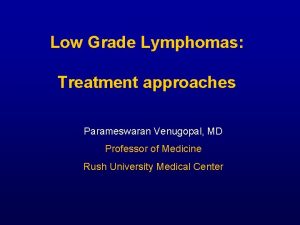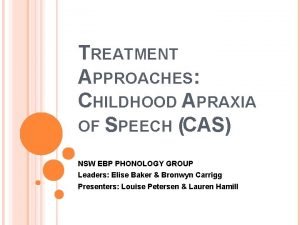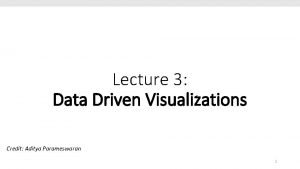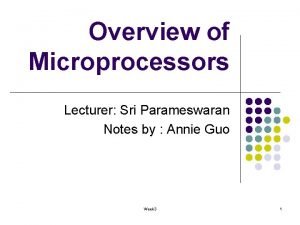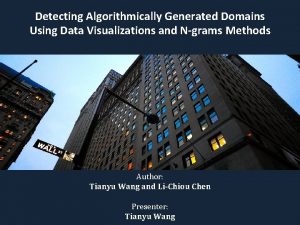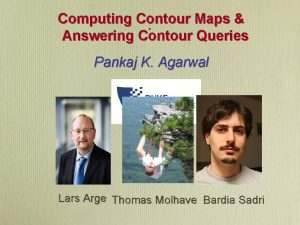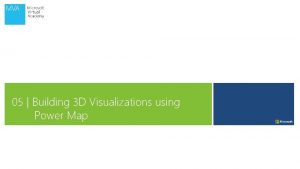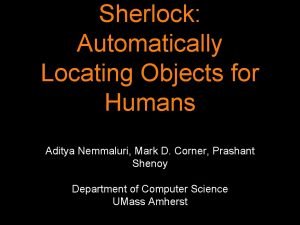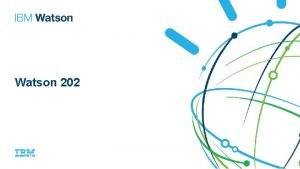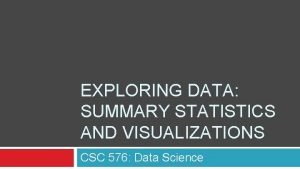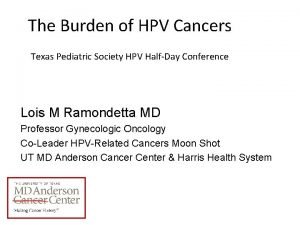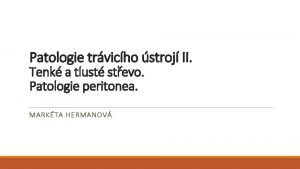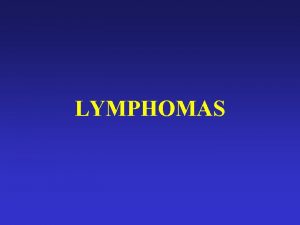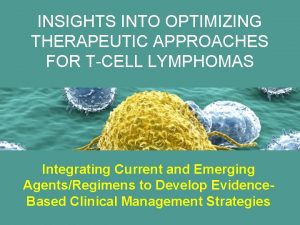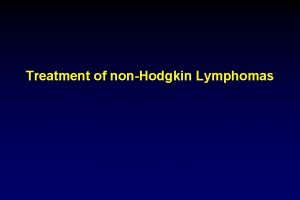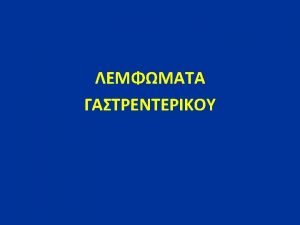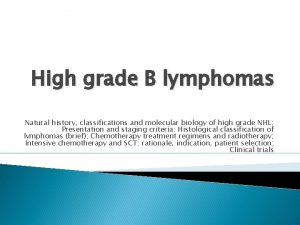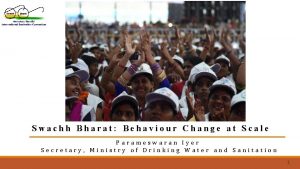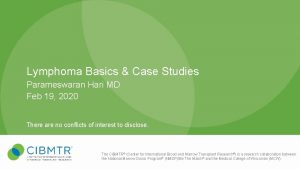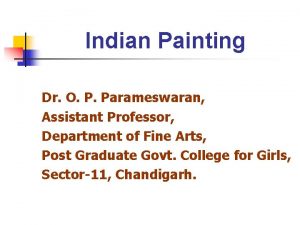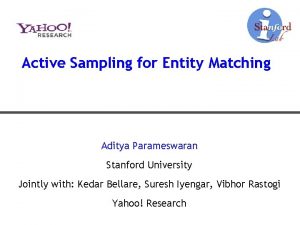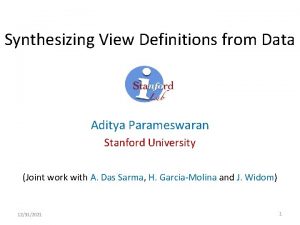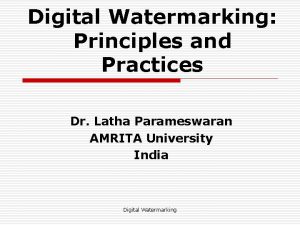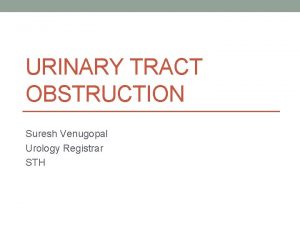Low Grade Lymphomas Treatment approaches Parameswaran Venugopal MD


















- Slides: 18

Low Grade Lymphomas: Treatment approaches Parameswaran Venugopal, MD Professor of Medicine Rush University Medical Center

SEER DATA 2015 2

SEER DATA 2015 3

Relative Incidence of NHL Subtypes Armitage and Weisenburger. J Clin Oncol. 1998; 16: 2780. Adapted from Jemal et al. CA Cancer J Clin. 2006; 56: 106. 4

Selected Indolent B-Cell Non-Hodgkin’s Lymphoma Subtypes Indolent Non-Hodgkin’s Lymphoma* Follicular lymphoma (22%) Small lymphocytic lymphoma (6%) Marginal-zone lymphoma (6%) − Splenic MZL − Nodal MZL − Mucosa-associated lymphoid tissue Hairy cell leukemia (<1%) Waldenstrom macroglobulinemia (<1%) *% of all NHL. National Comprehensive Cancer Network. Practice Guidelines in Oncology. v. 2. 2006. At: http: //www. cancer. gov/ cancertopics/pdq/treatment/adult-non-hodgkins/Health. Professional/page 2. Accessed May 2006. Ansell and Armitage. Mayo Clin Proc. 2005; 80: 1087. 5

Low Grade Lymphoma · Indolent lymphoma accounts for 30%-40% of NHL cases – FL (22%), SLL (7%), MALT (8%), WM (uncommon) · Often asymptomatic · 85%-90% present in stage III or IV (Ann Arbor Staging) Winter et al. Hematology. 2004; 203. Armitage and Weisenburger. J Clin Oncol. 1998; 16: 2780. Adapted from Jemal et al. CA Cancer J Clin. 2005; 55: 10. Al-Tourah et al. ASCO, 2006. Abstract 7510. · Long median survival (~10 years) · Advanced disease rarely curable with conventional treatments · Transformation to aggressive lymphoma often occurs – 3% risk/year – 30% risk over 10 years 6

Follicular Lymphoma (FL) · Most common indolent NHL, accounts for ~22% of NHL in North America · Typically advanced stage at presentation · Often asymptomatic 7

FL: WHO/REAL Grading Grade 1 <5/hpf Grade 2 Grade 3 a 6 -15/hpf Grade 3 b >15/hpf Sheet 8

Diagnosis

Follicular Lymphoma: Diagnosis · B symptoms · Physical Examination · Laboratory studies: · Biopsy of Lymph Node · Bone Marrow Biopsy · CAT Scan · PET scan 10

Treatment

Follicular Lymphoma Common Management Approach After Staging Evaluation Localized Involved/Extended Field Radiation Advanced Low Tumor Burden High Tumor Burden Observation Therapy

Watch & Wait Radiotherapy Chemotherapy Monoclonal Antibodies Radioimmunotherapy Stem Cell Transplantation New Agents:

New Agents: Ibrutinib (Imbruvica) Idelalisib (Zydelig) Venetoclax (Venclexta) Obinutuzumab (Gazyva)

Rituximab as a Targeted Therapy in FL · Murine/human Ig. G 1 kappa monoclonal antibody Murine variable regions bind specifically to CD 20 on B cells · Binds to CD 20 antigen · Half-life (at 375 mg/m 2) ~76. 3 hours after 1 st infusion and 205. 8 hours after the 4 th infusion · Mechanism of action – CDC, ADCC, apoptosis, and ionizing radiation– induced cell death Human constant regions Human Ig. G 1 Fc domain works in synergy with human effector mechanisms CDC = complement-mediated cell death; ADCC = antibody-dependent cell cytotoxicity. 15

Antibody-Dependent Cell-Mediated Cytotoxicity (ADCC) Granules Antigen Fc region Antibody Fc receptor (Fcg. RIII) NK cell B cell Granules release perforins and granzymes; cytokines secreted (eg, IFNg) Lysis H 2 O, ions, granzymes NK = natural killer. Pores (perforin) 16

Radioimmunotherapy Ibritumomab Tositumomab Chelator Radionuclide Tiuxetan 17

Targeting of B Cell Receptor Niedermeier M, et al. Blood. 2009; 113(22): 5549 -5557.
 Parameswaran venugopal
Parameswaran venugopal Venugopal iyengar
Venugopal iyengar Meta - change morph
Meta - change morph Cas treatment approaches
Cas treatment approaches Aditya parameswaran
Aditya parameswaran Sri parameswaran
Sri parameswaran Aditya parameswaran
Aditya parameswaran Aditya parameswaran
Aditya parameswaran Aditya parameswaran
Aditya parameswaran Aditya parameswaran
Aditya parameswaran Niyati parameswaran
Niyati parameswaran Aditya parameswaran
Aditya parameswaran Mid = (low + high) / 2
Mid = (low + high) / 2 Director communication style
Director communication style Significant figures
Significant figures Low voltage = low hazard
Low voltage = low hazard Low grade squamous intraepithelial lesion
Low grade squamous intraepithelial lesion Koprostáza
Koprostáza Lowgrade fever
Lowgrade fever
